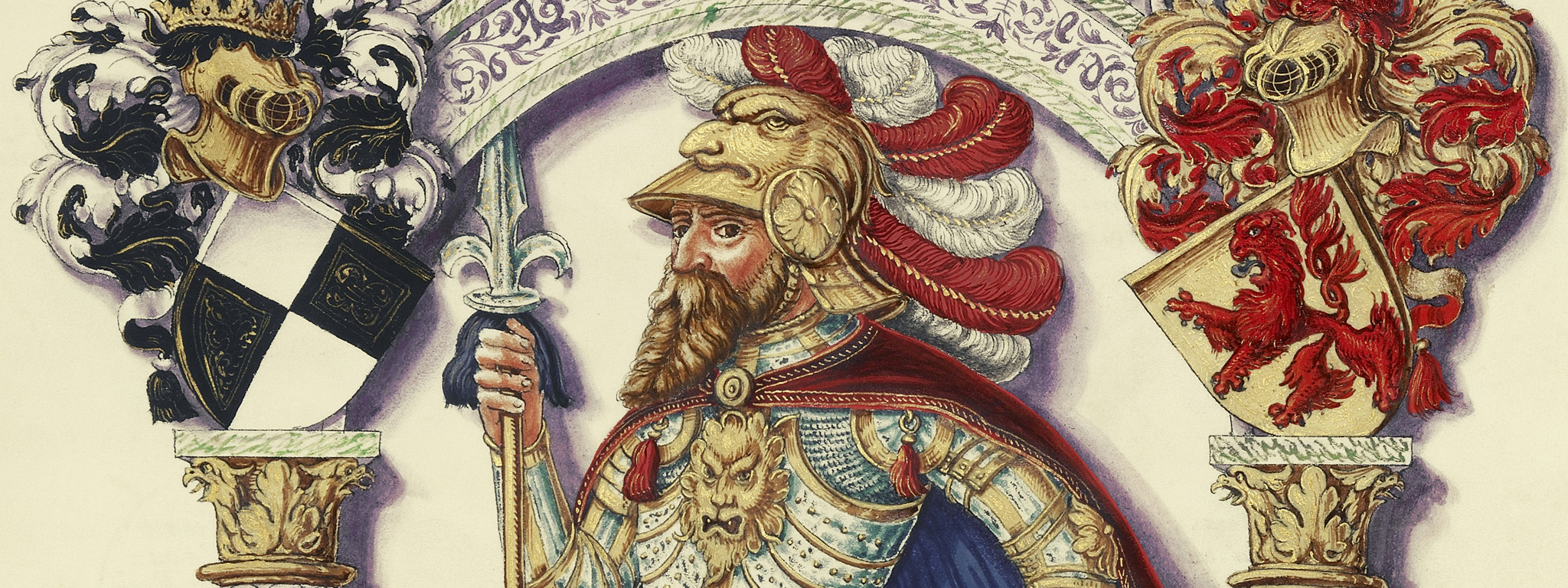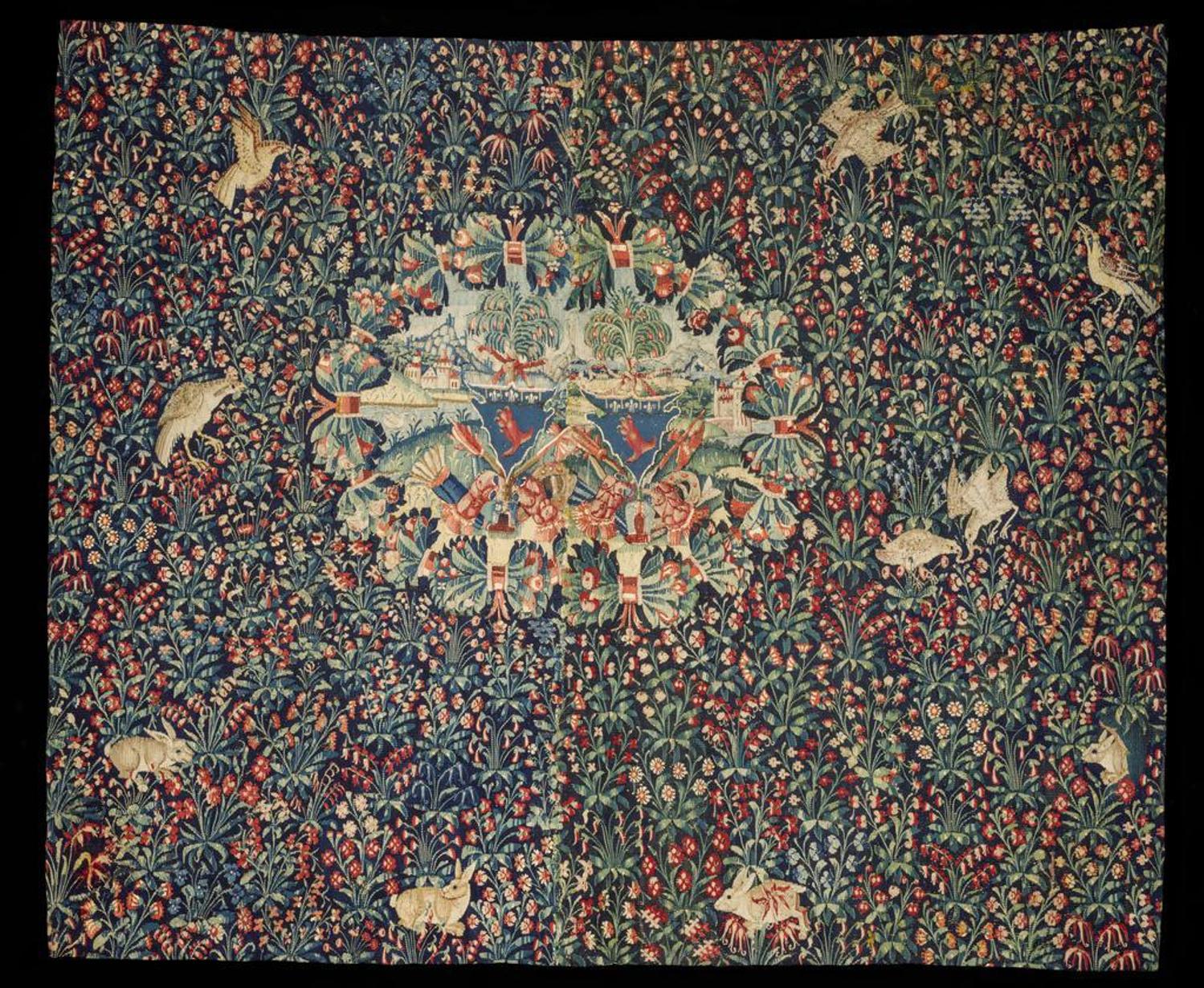At the J. Paul Getty Museum, Getty Center
August 28–December 2, 2018
Courtiers feasting at elaborately set tables, knights
in gleaming armor, a richly clad monarch presiding over elegant
festivities—these are the images often associated with the medieval and
Renaissance courts of Europe. For rulers and members of the nobility at
the center of these privileged spaces, the visual
arts—illuminated manuscripts, paintings, drawings, enamels, and
textiles—were central aspects of their political and cultural
identities.
All that Glitters: Life at the Renaissance Court, on view from
August 28 to December 2, 2018 at the J. Paul Getty Museum, focuses on
court culture during the transition between “late medieval” and
“Renaissance” (or “early modern”) Europe.
Unknown, A Tournament Contest, about 1560 - 1570. Tempera colors and gold and silver paint on paper bound between original pasteboard covered with original brown calf Dimensions: Leaf: 43 × 28.9 cm (16 15/16 × 11 3/8 in.) Accession No. 83.MR.184.27v Object Credit: The J. Paul Getty Museum, Los Angeles, Ms. Ludwig XV 14, fol. 27v. |
“During this critical period, the court was often a place of leisure,
entertainment, and display, where members of the aristocracy engaged
in tournaments, hunting, feasting, and games such as chess,” explains
Timothy Potts, director of the J. Paul Getty Museum. “The settings for
these pursuits were designed to impress—sumptuous and spectacular
displays of art and pageantry that reaffirmed their
status and prestige. The manuscripts that recorded such courtly
pastimes were themselves valued as luxury goods and much sought after by
the nobility.”

Eitelfriedrich I Hohenzollern from Chronicle of the Hohenzollern Family, about 1572, German,

Jörg Ziegler (German, early 16th century - 1574/1577), Eitelfriedrich I Hohenzollern, about 1572. Pen and ink, colored washes, tempera, and gold paint on parchment Dimensions: Leaf: 35.2 × 27.8 cm. Accession No. 83.MP.154.18 Object Credit: The J. Paul Getty Museum, Los Angeles, Ms. Ludwig XIII 11, fol 1.

Eitelfriedrich I Hohenzollern from Chronicle of the Hohenzollern Family, about 1572, German,

Jörg Ziegler (German, early 16th century - 1574/1577), Eitelfriedrich I Hohenzollern, about 1572. Pen and ink, colored washes, tempera, and gold paint on parchment Dimensions: Leaf: 35.2 × 27.8 cm. Accession No. 83.MP.154.18 Object Credit: The J. Paul Getty Museum, Los Angeles, Ms. Ludwig XIII 11, fol 1.
The objects featured in
All that Glitters include a selection of luxury textiles and
clothing, a drawing, a hand-colored print, and glass that complement the
wide variety of lavishly illuminated manuscripts that found an
enthusiastic audience in the palaces and châteaux of
late medieval and Renaissance Europe.
In aristocratic households all over continental Europe, even
expressions of religious faith took a luxurious material form. Court
artists
produced small illuminated prayer books that could be worn as
fashionable accessories, decorated with elegant fabrics, precious
metals, and glittering jewels that adorned the residences of Europe’s
elite.
Eitelfriedrich I Hohenzollern; Jörg Ziegler (German, early 16th century - 1574/1577); Rottenburg, Germany; about 1572; Pen a… | 16th century German art ...
Eitelfriedrich I Hohenzollern; Jörg Ziegler (German, early 16th century - 1574/1577); Rottenburg, Germany; about 1572; Pen a… | 16th century German art ...
The adherence to chivalric code and the way it governed both belief and
behavior at the Renaissance courts was established in the Middle
Ages but emerged with renewed vigor during the late medieval period. A
number of dazzling and complex objects including manuscripts and stained
glass explore the display of heraldry at court, where rank and systems
of social hierarchy were incredibly important.
Objects produced for kings, queens, and courtiers enshrined ideals of
chivalry, especially in the form of jousting that continued to guide
official conduct into the sixteenth century.
“The incredible material luxury of the objects in the exhibition shows how ostentatious life at court could be, but when you dig a little deeper, the same objects can also be evidence of how courtiers were expected to behave and how they built their social hierarchies and identities,” says Larisa Grollemond, assistant curator of manuscripts and curator of the exhibition.

Armorial Millefleurs Tapestry, 1530–1550, Belgian, artist unknown, wool; tapestry weave. Los Angeles County Museum of Art, Gift of Mr. and Mrs. Arnold Kirkeby. Image: www.lacma.org
The exhibition concludes with a display of illuminated manuscript leaves from the court of King Louis XIV at Versailles, where the splendor of European court life reached its apex in the seventeenth-century. The display of heraldry, personal emblems, fine textiles, and luxury books continued to affirm social standing and good taste. Ultimately, the very trappings of magnificence that once cemented the king’s authority would also be what helped spark a revolution.


